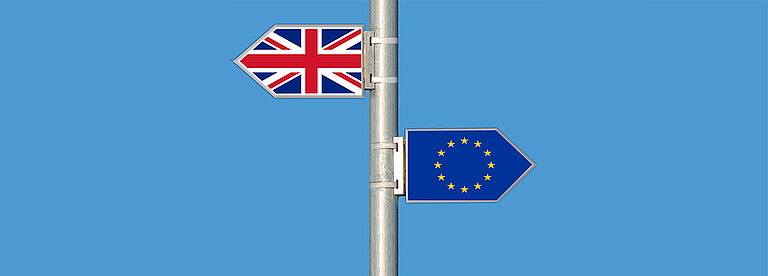In the case of an employee invention, which factors determine whether the priority right arising from a patent application is validly assigned to the employer? And: Is a document that was published in a certain time zone the day before the priority date considered prior art? The BGH took up these questions in its Drahtloses Kommunikationsnetz decision (X ZR 14/17) of September 4, 2018. The overarching question before the court was what documents constitute prior art for a patent being challenged in a nullity action in the first place. In its decision, the BGH added important points to its existing case law that may serve as a future guidance for applicants.
Assignment of priority right in the case of employee inventions
In the underlying facts of the case, the German subsidiary of a Swedish telecommunications provider had claimed an invention as an employee invention. The inventor, who was employed in Germany and in whose name a patent application establishing priority had already been filed for this invention in the United States, had merely communicated the U.S. application number to the company by e-mail. After that, the rights to the invention claimed were assigned to the parent company in Sweden. The BGH has viewed this as a legal transaction involving the transfer of the priority right from the inventor to the German subsidiary. The judges’ decision was based on the interests of both parties that arise from the German law on employee inventions. According to these considerations, the BGH held that merely communicating the U.S. application number for information purposes should be deemed to constitute an offer by the inventor to assign the priority right by way of a legal transaction. When the invention was claimed by the employer, this offer was accepted.
The BGH set out two headnotes relating to the international assignability of priority rights:
1) The validity of transferring the rights to an invention by way of the employer claiming that invention as an employee invention is geared toward the system of laws governing the employment relationship.
2) Which rights and obligations of the parties to a contract arise from an agreement to transfer a priority right by way of a legal transaction cannot be judged according to the system of laws operative for the initial application, but rather must be judged according to the system of laws that applies to the contract. If the agreement is made between the employee inventor and that person’s employer, the system of laws that applies to the contract is typically the same one that governs the employment relationship.
With this judgment, the BGH has added concrete detail to the existing case law: Previously, the laws of the country where the first application was filed were always taken as the basis (see BGH, X ZR 49/12, Fahrzeugscheibe). The two new headnotes mean that in the case at hand, German law on employee inventions is applicable in the first place. This system of laws is the source of the consideration of the interests of both parties that the BGH uses as the basis for the assignment of the priority right via a legal transaction. The judges set the bar for an assignment like this relatively low by deeming a purely informational notice to constitute a declaration of intent (offer). But is the fact of claiming an employee invention alone (without the application number being communicated, as in this case) sufficient for the priority right to transfer? This question remains unanswered. Therefore, with an eye to legal certainty, companies should always have the priority right, especially to a prior U.S. application, assigned to them via a separate, demonstrable legal transaction.
Time zone for determining the publication date
A second interesting aspect of the decision concerns the determination of the publication date for prior art purposes. In the case at hand, the prior art document had been uploaded to a European Web server at 8:36 a.m. local time in Europe on the priority date. However, that point in time was still 10:36 p.m. in time zone UTC-9 (Alaska) and 9:36 p.m. in time zone UTC-10 (Hawaii), in both cases on the previous day. This meant that the document that was detrimental to novelty was accessible there before the actual priority date. From the plaintiff’s standpoint, it therefore constituted previously published prior art that needed to be considered. The BGH rejected this argument, however – with the following headnote as grounds:
3) A technical teaching made accessible to the public by being uploaded to a Web server and made available via the Internet in general or to a portion of the specialized public worldwide is not considered to constitute prior art merely because at the time of uploading, the priority date or filing date had not yet begun in a time zone other than that of the place where the uploading took place.
For determining the publication date of a prior art document, the BGH held that it is permissible, on the one hand, to take as the basis the time zone in which the office concerned in the patent or priority application is located (in this case, time zone UTC-5 due to the fact that the U.S. Patent and Trademark Office (USPTO) is located in Alexandria, Virginia). The court also held that on the other hand, it is permissible to use the time zone of the act of publication (in this case, time zone UTC+1 in Europe). The BGH did not decide between these two options. In its third headnote, the court merely declared an artificial expansion to all possible time zones to be inadmissible. For applicants, this means that until further notice, only the date of a prior art document is relevant, as previously. Further research concerning the exact time of the publication is not necessary.
Picture credits: Flagge: allexxandarx – AdobeStock.com, Aktenübergabe: BillionPhotos.com – AdobeStock.com

![[Translate to Englisch:] [Translate to Englisch:]](/fileadmin/_processed_/7/b/csm_Weiterentwicklung_in_der_Rechtsprechung_-_%C3%9Cbertragung_des_Priorit%C3%A4tsrechts_und_Ver%C3%B6ffentlichungstag_von_Dokumenten_b77ab0f3ed.jpg)


